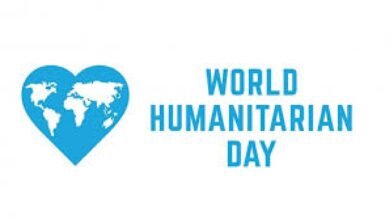Child Labour in 2025: A Global Injustice Demanding Urgent Action

Each year, on June 12, the world marks World Day Against Child Labour, an international observance launched by the International Labour Organization (ILO) in 2002 to raise awareness and rally action. But as we cross into 2025, there is little to celebrate. Instead, we are confronted with a moral emergency: 138 million children remain trapped in child labour globally, including 54 million in hazardous, life-threatening conditions.
Behind these statistics are children, real lives, real stories of lost childhood, broken bodies, stunted dreams, and silence born of survival. Their plight is not just a reflection of poverty or poor governance; it is a measure of how far we have fallen short as a global society committed to justice, equality, and the rights of every child.
The Condition of Children Today
Across the globe, children as young as five wake up each morning not to go to school, but to toil in fields, factories, mines, and homes. They carry bricks, stitch garments, mine mica, harvest cocoa, or work as domestic help—often for long hours, little to no pay, and under conditions that threaten their health and dignity.
In sub-Saharan Africa, 1 in every 5 children is engaged in child labour, the highest regional prevalence in the world. In Asia and the Pacific, roughly 7% of children are in child labour. In conflict zones and fragile economies, the numbers are even higher fueled by displacement, hunger, and institutional collapse.
Understanding the Issue: Why Child Labour Persists
1. Economic Inequality and Family Poverty
At the heart of child labour is poverty. Families struggling to survive often make impossible choices. When adults are underpaid, unemployed, or work in the informal sector, their children become a safety net. This is not negligence, it is desperation.
2. Lack of Social Protection
According to UNICEF and the ILO:
-
Only 1.1% of global GDP is allocated to child protection.
-
In Africa, the figure drops to a dire 0.4%.
Without access to child benefits, healthcare, income support, or food security, millions of families are left to fend for themselves, with children bearing the brunt.
3. Weak Enforcement of Labour Laws
ILO Conventions 138 and 182 meant to set minimum working ages and prohibit hazardous child labour, remain under-enforced in many countries. Labour inspection systems are underfunded, and penalties are weak or inconsistently applied.
4. Corporate Complicity and Exploitative Supply Chains
Multinational corporations often benefit, directly or indirectly, from child labour. In industries like textiles, agriculture, or mining, children are part of global supply chains, exploited to maximize profits in systems that lack transparency and accountability.
5. Broken Education Systems
Free, quality, and accessible education is one of the most effective antidotes to child labour. Yet for millions of children, especially girls, migrants, and children in conflict zones, education remains inaccessible or unsafe.
2025: A Missed Deadline for SDG 8.7
When the global community adopted the Sustainable Development Goals (SDGs) in 2015, it committed to ending child labour in all its forms by 2025 (Target 8.7). Today, just months from that deadline, we are dangerously off-track.
This is not just a failure of policy, it is a failure of political will, of financial priorities, and of moral commitment.
Recommendations: What Must Be Done Now
Ending child labour is not a technical challenge, it is a justice issue. And justice requires systemic, bold, and coordinated action.
1. Guarantee Decent Work and Living Wages for Adults
-
Families must no longer depend on a child’s income to survive.
-
Governments and employers must commit to decent wages, formalize informal work, and uphold workers’ rights.
-
The ILO–ITUC–IOE Global Programme on Living Wages must be scaled and enforced.
2. Invest in Universal Social Protection
-
Establish or expand child benefits, income support, and health coverage, particularly in rural and low-income areas.
-
Global development financing must prioritize children’s well-being, not military or extractive industry subsidies.
3. Strengthen and Enforce Legal Protections
-
Ratify and fully implement ILO Conventions 138 and 182.
-
Expand and equip labour inspection systems.
-
Impose meaningful penalties on corporations and supply chains that violate child labour laws.
4. Make Free, Quality Education Truly Universal
-
Invest in inclusive public education systems, especially for girls, displaced children, and children in remote or post-conflict areas.
-
Ensure schools are safe, adequately staffed, and resourced to retain learners.
5. Foster International Solidarity and Accountability
-
Alliances like Alliance 8.7 must be empowered to track progress and hold governments accountable.
-
The upcoming 6th Global Conference on the Elimination of Child Labour in Morocco must produce binding roadmaps—not just declarations.
-
Child Labour Free Zones (CLFZs) and community-driven monitoring systems must be expanded globally.
Conclusion
The persistence of child labour is a stain on the conscience of humanity. We know what needs to be done. The tools, data, and global frameworks are already in place. What we lack is commitment, prioritization, and urgency.
As we observe World Day Against Child Labour 2025, let us reject complacency. Let us remember that progress is not victory, not while even one child’s dream is crushed beneath the burden of forced labour.





